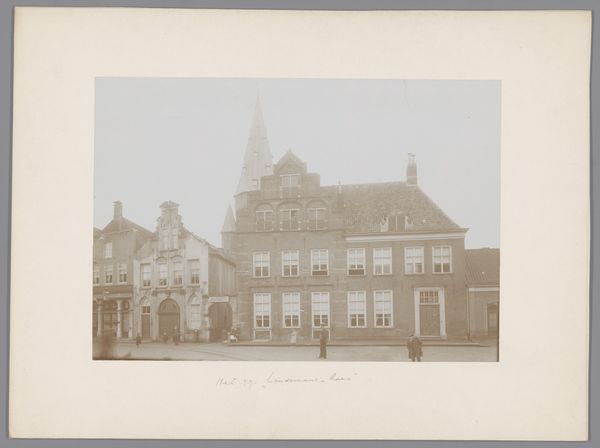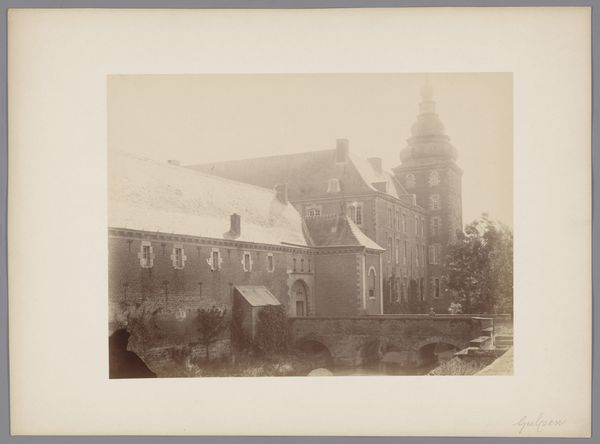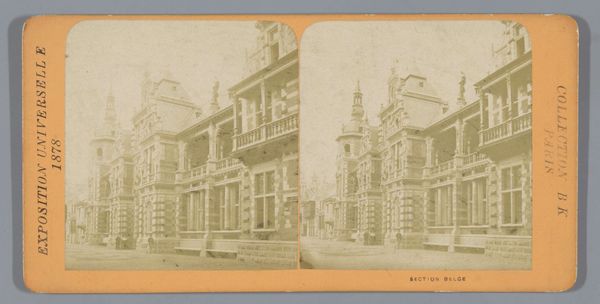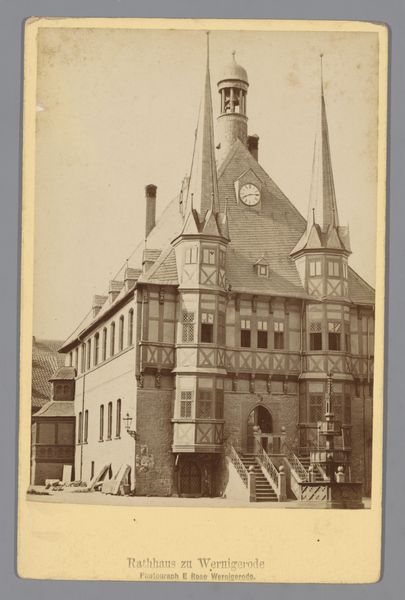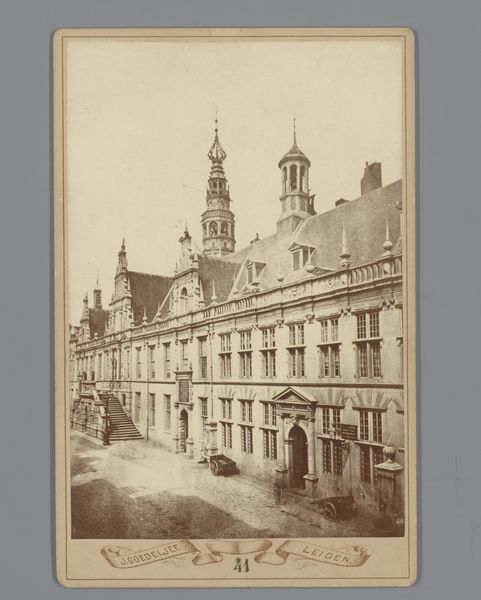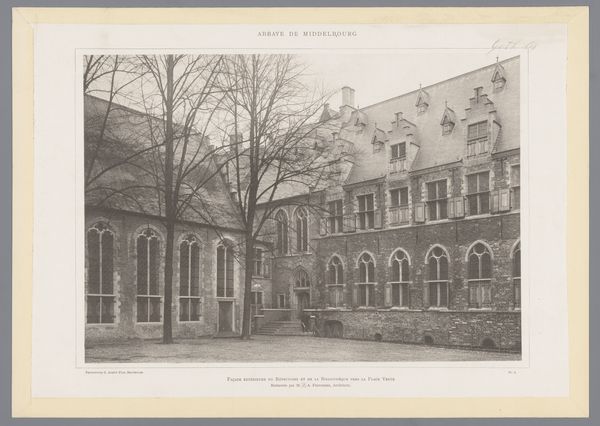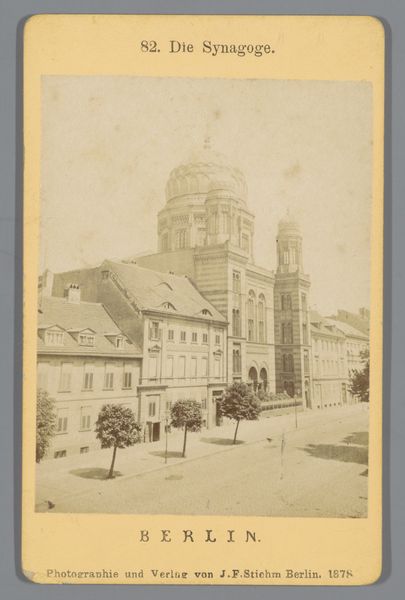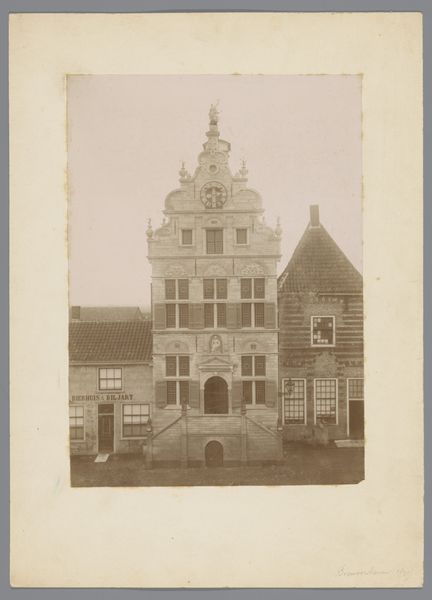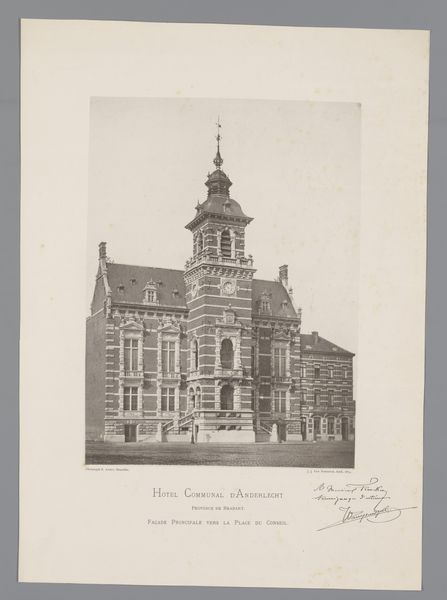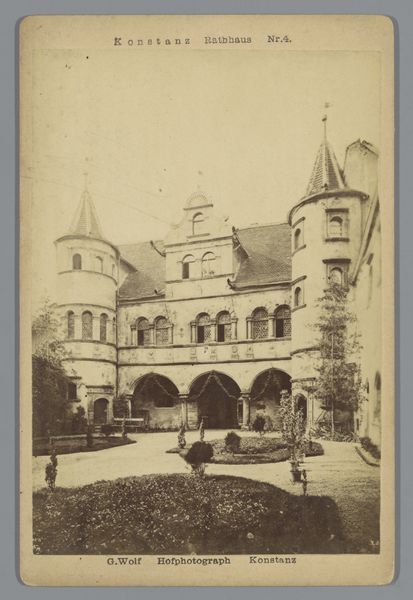
photography, gelatin-silver-print
#
aged paper
#
toned paper
#
homemade paper
#
photography
#
gelatin-silver-print
#
19th century
#
cityscape
#
building
Dimensions: height 108 mm, width 166 mm
Copyright: Rijks Museum: Open Domain
Editor: The mood in this 19th-century gelatin silver print feels… melancholic. Is this the effect of age on the photograph, or something inherent in its subject? Curator: Likely a bit of both. This photograph, attributed to Louis Koch and titled "View of the Commerce Building in Bremen," dates between 1880 and 1900. Note how Koch has expertly utilized light and shadow to sculpt the facade of the building, creating a sense of depth and monumental scale. The tonal variations add richness to the composition. Editor: But beyond its formal aspects, let's consider the production itself. The gelatin-silver process would have involved skilled labor in preparing the emulsion, coating the paper, and developing the print. How did this craftsmanship shape the image we see? Also, this being on aged homemade paper indicates care for material, and a respect for value over mass manufacture. Curator: Precisely. We might read the photograph's meticulous composition and fine details—observe the intricate ornamentation of the building—as a reflection of the burgeoning bourgeois class and its architectural aspirations. There is an undeniable presence in its rigid geometric forms. Editor: True, but consider the other commercial structures from that era built in Germany; how readily were the skilled and non-skilled labors mobilized to manufacture each building like the other? Are they commodities that lose their value the more indistinguishable each new commodity is made to look like its predecessor? Curator: I see your point. It seems that in analyzing "View of the Commerce Building in Bremen," the architectural style creates a play of verticals and horizontals and a measured rhythm, guiding the viewer’s eye and solidifying the building’s presence within its historical context. The symmetry here suggests permanence, stability... a constructed sense of civic pride. Editor: And from my perspective, what are we willing to manufacture? A commercial building should exist for function and nothing more, so its aesthetics could be lost for more practical building material, efficient labor and faster means. Perhaps, some day this will truly reflect that, where efficiency of commerce and building comes first over what can be constructed as beautiful, but nothing more. Curator: A fitting consideration. The work invites analysis beyond mere documentation to see not just the visual aspects of commerce in the 19th century, but a window into that society's values through its physical constructions and our perceptions about aesthetics in commerce buildings today. Editor: Yes, prompting us to contemplate how industrialization shaped our environment. And in turn, how photographic reproductions shaped our understanding of architectural ambition, especially by a society so driven to define that aesthetic itself.
Comments
No comments
Be the first to comment and join the conversation on the ultimate creative platform.

